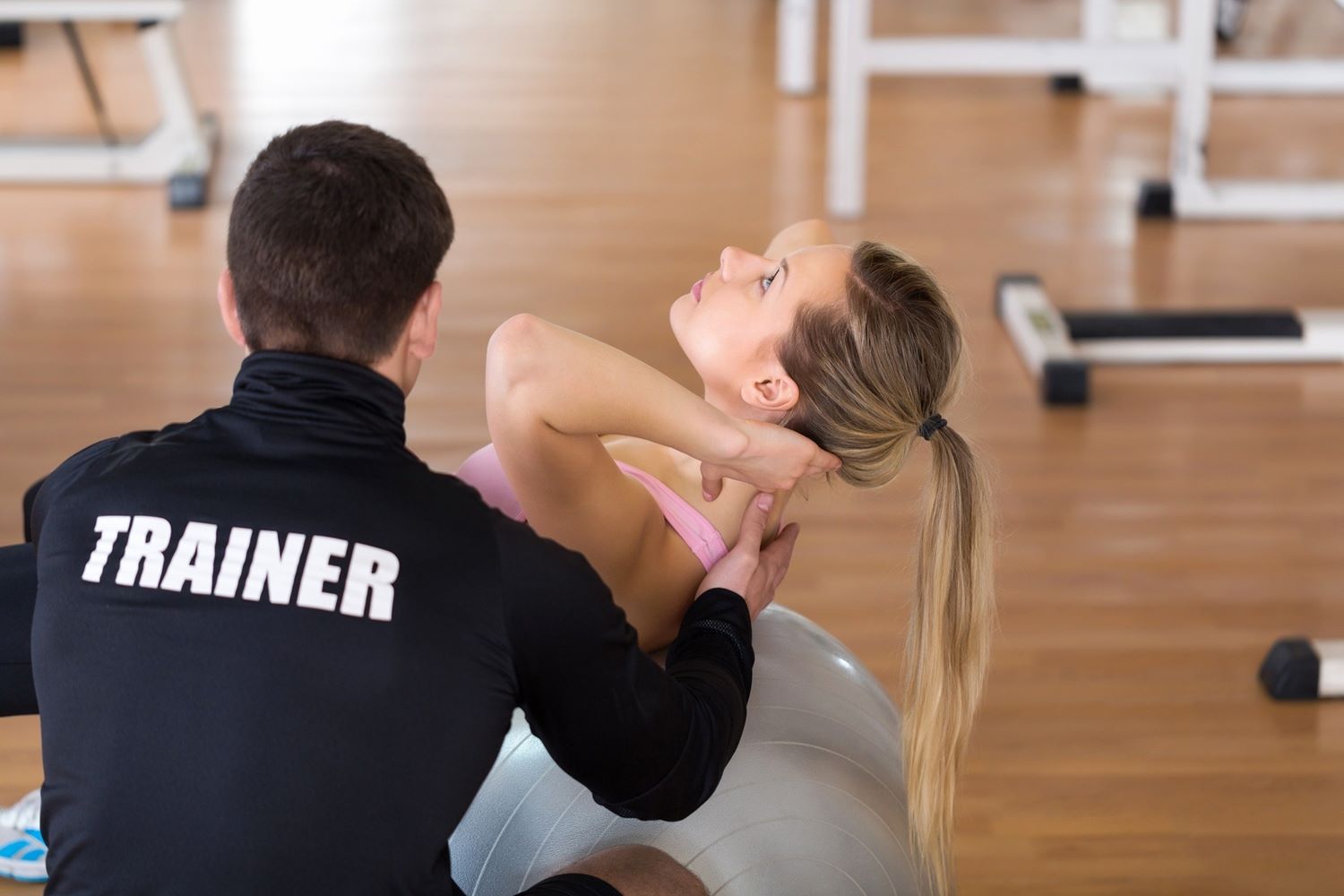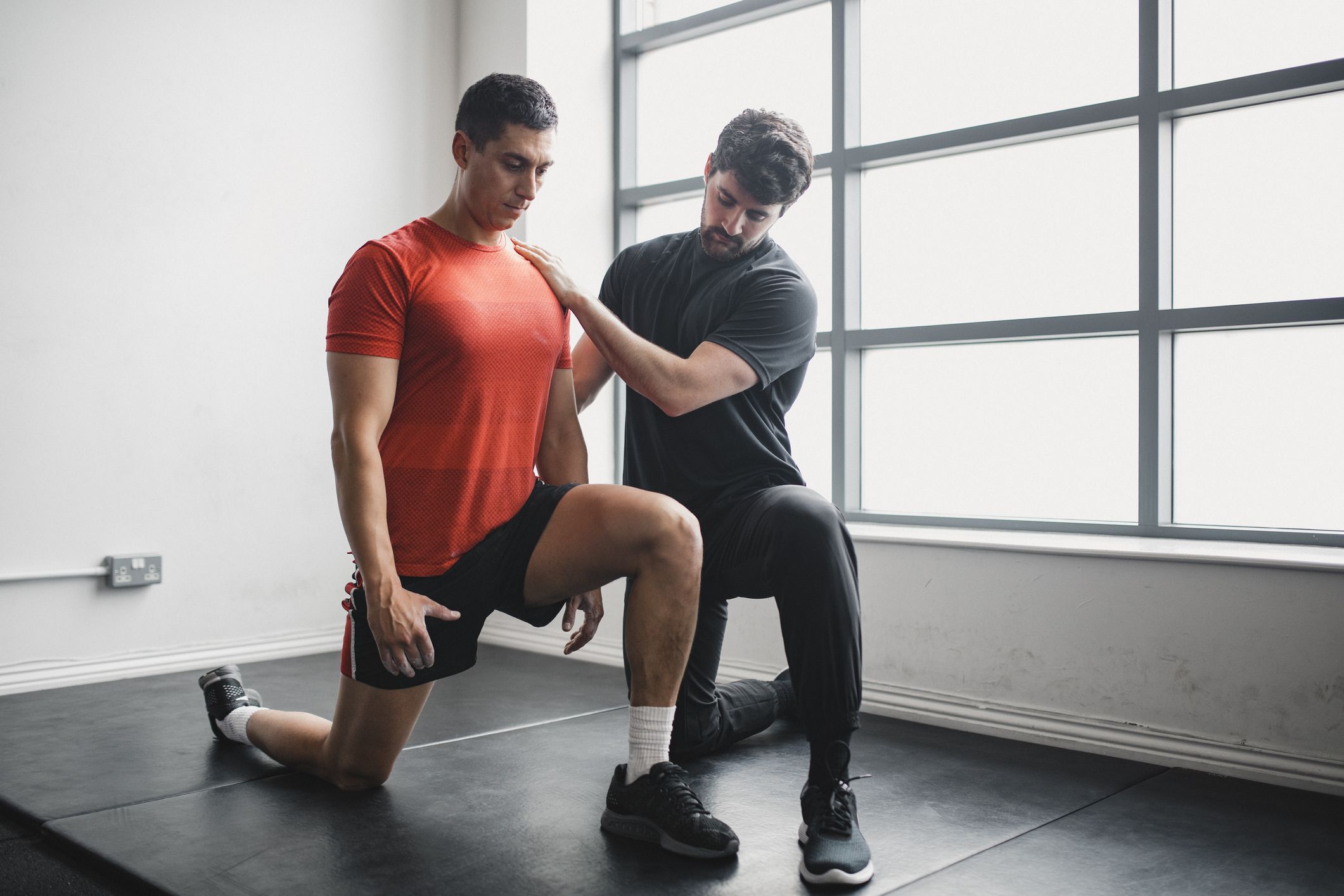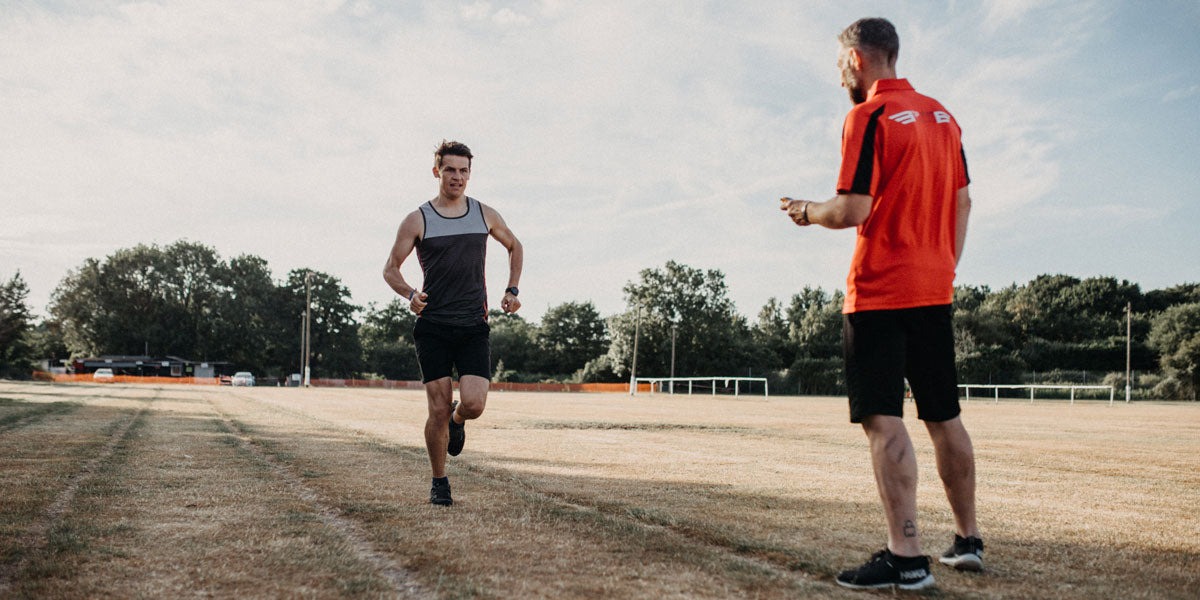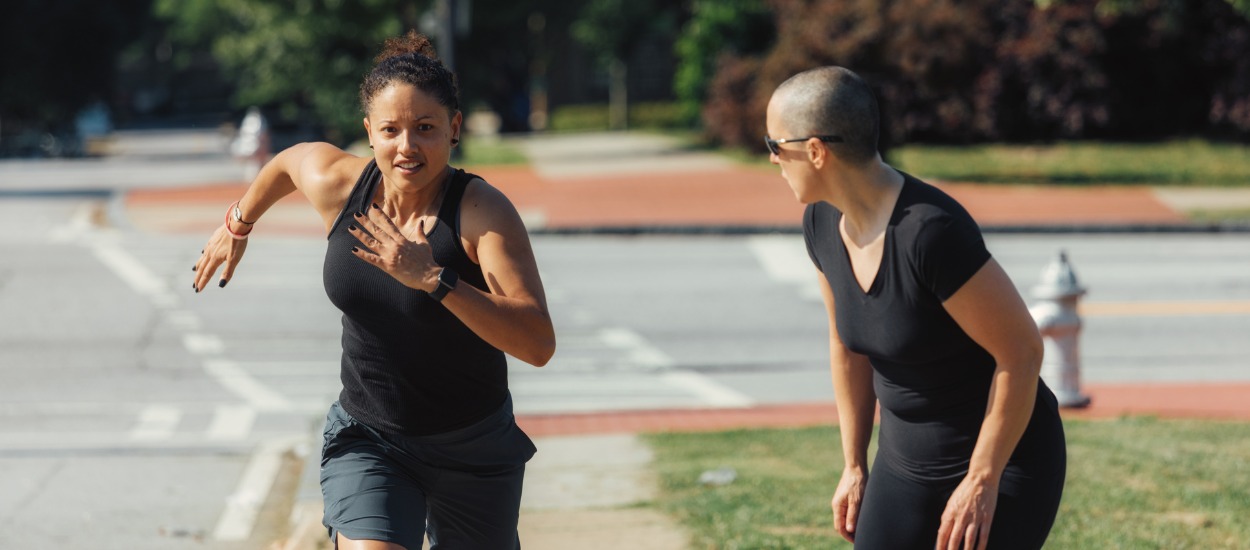Home>Misc>Featured>What Should A Client With An Arthritic Condition Avoid Doing Before An Exercise Session?


Featured
What Should A Client With An Arthritic Condition Avoid Doing Before An Exercise Session?
Modified: January 2, 2024
Before starting an exercise session, clients with an arthritic condition should be cautious and avoid activities that may exacerbate their symptoms. Get expert advice on what to avoid from our featured article.
Introduction
Living with arthritis can pose unique challenges, but it doesn’t have to prevent individuals from staying active. In fact, regular exercise is essential for managing arthritis symptoms and maintaining joint flexibility. However, before engaging in any physical activity, it is important for individuals with arthritis to take certain precautions to ensure their safety and prevent exacerbation of their condition.
Arthritis is a common condition that affects millions of people worldwide. It is characterized by inflammation and stiffness in the joints, which can lead to pain and limited mobility. Exercise is a valuable tool in managing arthritis because it helps to strengthen the muscles around the joints, improve flexibility, and reduce pain.
Before embarking on an exercise session, it’s crucial for individuals with arthritis to take the time to prepare both mentally and physically. Proper preparation can help minimize the risk of injury and maximize the benefits of exercise.
In this article, we will explore the activities that individuals with arthritis should avoid before an exercise session. By understanding these precautions, individuals can ensure they are taking the necessary steps to protect their joints and enhance their workout experience.
Understanding Arthritis and Exercise
Arthritis is a condition that affects the joints, causing pain, stiffness, and inflammation. There are several types of arthritis, including osteoarthritis, rheumatoid arthritis, and psoriatic arthritis, each with its own specific symptoms and treatments.
Exercise plays a crucial role in managing arthritis because it helps to improve joint mobility, strengthen muscles, and reduce pain. When done correctly, exercise can actually help to slow down the progression of arthritis and improve overall quality of life.
One of the key benefits of exercise for individuals with arthritis is its ability to reduce joint stiffness. Regular physical activity helps to lubricate the joints and maintain their range of motion, preventing them from becoming stiff and immobile.
Exercise also helps to strengthen the muscles surrounding the joints, providing better support and stability. Strong muscles can help protect the joints from further damage and reduce pain.
In addition, exercise contributes to weight management, which is essential for individuals with arthritis. Maintaining a healthy weight alleviates pressure on the joints, reducing pain and inflammation.
It is important to note that not all exercises are suitable for individuals with arthritis. Certain activities may put too much strain on the joints or exacerbate pain and inflammation. That’s why it is crucial for individuals with arthritis to understand which exercises are safe and beneficial for their condition.
Consulting with a healthcare professional or a physical therapist who specializes in arthritis is highly recommended before starting an exercise program. These professionals can provide guidance on which exercises are most appropriate for each individual and can create a tailored exercise plan that takes into account their specific needs and limitations.
Importance of Preparing for an Exercise Session
Preparing for an exercise session is essential for individuals with arthritis to ensure they have a safe and effective workout. Taking the time to properly prepare can help prevent injuries, reduce pain, and maximize the benefits of exercise.
One of the primary reasons for preparing before an exercise session is to warm up the body. Warm-up exercises increase blood flow to the muscles and joints, making them more flexible and less prone to injury. Gently moving the joints through their full range of motion can also help reduce stiffness and improve overall mobility.
Another crucial aspect of preparation is choosing the right type of exercise for the individual’s specific arthritis condition. Different types of arthritis may have different limitations, and certain activities may be more suitable than others. For example, individuals with osteoarthritis may benefit from low-impact exercises like swimming or cycling, while those with rheumatoid arthritis may find activities like yoga or tai chi helpful in improving joint flexibility and reducing pain.
It is also important to listen to the body and respect its limits. Pushing too hard or ignoring signs of pain can lead to injury and further exacerbation of arthritis symptoms. Taking breaks, modifying movements, and gradually increasing the intensity and duration of exercise can help individuals with arthritis build strength and endurance safely.
In addition, preparing for an exercise session includes wearing proper gear and using any necessary aids or supports. Wearing comfortable, supportive shoes and using braces or splints, if recommended by a healthcare professional, can help protect the joints and provide added stability during workouts.
Lastly, maintaining good hydration and fueling the body with balanced nutrition is an important part of preparation. Drinking enough water and consuming a well-rounded diet that includes fruits, vegetables, lean proteins, and whole grains can provide the necessary energy and nutrients to support the body during exercise and aid in recovery.
By thoroughly preparing for an exercise session, individuals with arthritis can minimize the risk of injury, manage pain, and achieve the optimal benefits of physical activity for their specific condition. It is important to remember that each person’s arthritis journey is unique, and what works for one individual may not work for another. Consulting with a healthcare professional or a physical therapist is highly recommended to create an individualized exercise plan that addresses the specific needs and limitations of each person with arthritis.
Activities to Avoid Before an Exercise Session
Before engaging in an exercise session, individuals with arthritis should be aware of certain activities that may worsen their symptoms or increase the risk of injury. By avoiding these activities, they can protect their joints and ensure a more comfortable and effective workout.
1. Avoid Intense Physical Activity: Engaging in high-intensity exercises, such as running or heavy weightlifting, can put excessive strain on the joints. Individuals with arthritis should opt for low-impact activities that are gentler on the joints, such as swimming, cycling, or elliptical training.
2. Avoid Heavy Lifting: Lifting heavy objects can place significant stress on the joints, especially in individuals with arthritis. It is important to avoid lifting heavy weights, and if necessary, use proper lifting techniques or seek assistance to minimize the strain on the joints.
3. Avoid High-Impact Exercises: Activities that involve jumping, bouncing, or sudden impacts, such as running on hard pavement or participating in high-impact aerobics, should be avoided. These movements can put excessive pressure on the joints and potentially cause pain or injury.
4. Avoid Overexertion: Pushing beyond one’s limits can lead to overexertion, which can increase the risk of joint damage or inflammation. Individuals with arthritis should exercise within their comfort zone and listen to their bodies, taking breaks when needed and gradually increasing the intensity and duration of their workouts.
5. Avoid Cold Weather Exposure: Cold weather can cause joint stiffness and increase pain for individuals with arthritis. It is advisable to avoid exercising in extreme cold temperatures or to properly layer up to keep the joints warm and protected.
6. Avoid Excessive Joint Movement: Engaging in repetitive or excessive joint movements can aggravate arthritis symptoms. It is important to avoid activities that may place excessive strain on the joints or cause discomfort, such as deep knee bends or excessive back arching.
7. Avoid Strenuous Activities That May Cause Injury: Certain activities, such as contact sports or activities with a high risk of falls, should be avoided as they can result in joint injuries and further complications for individuals with arthritis. It is important to choose activities that are safe and suitable for the individual’s condition and limitations.
By being mindful of these activities to avoid before an exercise session, individuals with arthritis can reduce the risk of joint pain, inflammation, and injury. It is always recommended to consult with a healthcare professional or a physical therapist for personalized guidance and recommendations based on the specific type and severity of arthritis.
Avoid Intense Physical Activity
For individuals with arthritis, engaging in intense physical activity can be detrimental to their joint health. Activities that place a high amount of stress and strain on the joints can potentially worsen arthritis symptoms and increase the risk of injury.
Intense physical activity often involves repetitive movements, heavy impact, and high resistance, all of which can exacerbate joint pain and inflammation in individuals with arthritis. Running on hard surfaces, participating in contact sports, or performing heavy weightlifting are examples of intense physical activities that may not be suitable for individuals with arthritis.
Instead, individuals with arthritis should opt for low-impact exercises that are gentler on the joints. Swimming, cycling, water aerobics, and using an elliptical machine are excellent alternatives that provide cardiovascular benefits without placing excessive stress on the joints.
Engaging in low-impact activities allows individuals with arthritis to improve cardiovascular fitness, strengthen muscles, and maintain joint flexibility without exacerbating their symptoms. These exercises also help in weight management, which is crucial for individuals with arthritis as excess weight can put additional strain on the joints.
It is important to note that while intense physical activity may be best avoided, moderate exercise is still highly beneficial for individuals with arthritis. Moderate exercises, such as brisk walking, dancing, or using resistance bands, can help improve joint mobility, strengthen muscles, and reduce pain.
Before starting any exercise program, individuals with arthritis should consult with a healthcare professional or a physical therapist specialized in arthritis. They can provide personalized recommendations based on the individual”s specific condition, taking into account factors such as age, joint involvement, and any other underlying health concerns.
By avoiding intense physical activity and opting for low-impact or moderate exercises, individuals with arthritis can protect their joints while still reaping the many benefits of physical activity. It is important to listen to your body, start slowly, and gradually increase the intensity and duration of exercise to minimize the risk of injury and ensure a safe and effective workout routine.
Avoid Heavy Lifting
Heavy lifting can pose significant risks for individuals with arthritis. It places a tremendous amount of strain on the joints, which can worsen arthritis symptoms and potentially lead to injuries. Therefore, individuals with arthritis should avoid engaging in activities that involve heavy lifting.
The joints most commonly affected by arthritis, such as the knees, hips, and spine, can be particularly vulnerable to damage from heavy lifting. Lifting heavy weights improperly or without proper technique can place excessive stress on these joints, leading to pain, inflammation, and potential long-term damage.
Instead of heavy lifting, individuals with arthritis should opt for exercises that focus on lower resistance and higher repetitions. This can help build strength and endurance without overburdening the joints. Utilizing resistance bands, light hand weights, or bodyweight exercises can provide a safer alternative with less strain on the joints.
It is also essential to understand and practice proper lifting techniques, even when dealing with lighter loads. This includes techniques such as bending the knees and lifting with the legs rather than the back to minimize stress on the joints.
If lifting heavy objects is necessary, individuals with arthritis should seek assistance or use assistive devices such as dollies, carts, or lifting straps to reduce the strain on their joints. Remember to honor your body’s limitations and avoid pushing beyond your capabilities.
Furthermore, it is crucial to consult with a healthcare professional or a physical therapist before engaging in any weightlifting program. They can provide guidance on appropriate exercises and recommend modifications based on the individual’s specific arthritis condition, ensuring a safe and effective workout routine.
By avoiding heavy lifting and adopting alternative exercises that focus on lower resistance and proper technique, individuals with arthritis can protect their joints, minimize pain, and reduce their risk of injury. Consistency and moderation are key in maintaining joint health and overall well-being for individuals living with arthritis.
Avoid High-Impact Exercises
High-impact exercises, which involve repetitive pounding and jumping motions, can be detrimental to individuals with arthritis. These activities put excessive strain on the joints, potentially worsening arthritis symptoms and increasing the risk of injury.
Examples of high-impact exercises to avoid for individuals with arthritis include running on hard surfaces, jumping jacks, plyometrics, and high-impact aerobics. These activities subject the joints to significant force and can lead to increased pain, inflammation, and potential joint damage.
Instead, individuals with arthritis should focus on low-impact or non-impact exercises that provide cardiovascular benefits without placing excessive stress on the joints. Walking, swimming, cycling, using an elliptical machine, or practicing low-impact aerobics are excellent alternatives.
Low-impact exercises, such as swimming or water aerobics, are particularly beneficial as they provide resistance and buoyancy, reducing the impact on the joints while still allowing for a challenging workout. This is especially advantageous for individuals with arthritis in weight-bearing joints such as the knees and hips.
Non-impact exercises, such as stationary biking or using a rowing machine, can also be effective in improving cardiovascular fitness without subjecting the joints to high impact. These exercises provide a smooth range of motion, reducing stress on the joints while still providing a challenging workout.
As with any exercise, it is important for individuals with arthritis to start slowly and gradually increase the intensity and duration of their workouts. This allows the body to adapt and minimize the risk of overexertion or joint discomfort.
Before starting a new exercise program, it is advisable for individuals with arthritis to consult with a healthcare professional or a physical therapist. They can provide personalized recommendations based on the individual’s specific arthritis condition, taking into account factors such as joint involvement, level of inflammation, and any other underlying health concerns.
By avoiding high-impact exercises and opting for low-impact or non-impact alternatives, individuals with arthritis can protect their joints, manage their symptoms, and enjoy the benefits of cardiovascular exercise while minimizing the risk of injury or exacerbation of their condition.
Avoid Overexertion
Overexertion can be particularly harmful to individuals with arthritis. Pushing the body beyond its limits can lead to increased joint pain, inflammation, and potential injury. It is crucial for individuals with arthritis to avoid overexertion during exercise sessions to ensure a safe and effective workout.
One of the primary reasons for avoiding overexertion is to prevent joint damage. Overdoing it with intense or prolonged exercise can put excessive stress on the joints, leading to increased pain and potential long-term complications. It is important to strike a balance between challenging oneself and listening to the body’s limitations.
Individuals with arthritis should pay close attention to the signs and signals their bodies provide during exercise. It is advisable to exercise within a comfortable range without causing excessive joint pain or fatigue. Taking breaks and modifying activities as needed can help prevent overexertion and reduce the risk of joint damage.
Gradually increasing the intensity and duration of exercise is key to avoiding overexertion. Starting with shorter sessions and gradually increasing the time and difficulty level allows the body to adapt and build strength over time, minimizing the risk of joint strain or injury.
Furthermore, it is important to find a balance between rest and physical activity. Rest days or lighter exercise days can help the body recover and prevent overexertion. Adequate rest is necessary for muscle repair and joint recovery, promoting overall joint health for individuals with arthritis.
Individuals with arthritis should listen to their bodies and adjust their exercise routine accordingly. If symptoms are exacerbated or pain persists, it is important to consult with a healthcare professional or a physical therapist. They can provide guidance and make recommendations for modifying the exercise program to suit individual needs and limitations.
By avoiding overexertion and practicing moderation, individuals with arthritis can enjoy the benefits of exercise while minimizing the risk of joint damage and discomfort. Maintaining a balance between challenge and rest is crucial for long-term joint health and overall well-being.
Avoid Cold Weather Exposure
Cold weather can have a significant impact on arthritis symptoms, often worsening joint pain and stiffness. Therefore, individuals with arthritis should take precautions to avoid exposure to cold temperatures during their exercise sessions.
Cold weather can cause the muscles and joints to contract, leading to increased stiffness and reduced range of motion. This can make exercise more challenging and potentially increase the risk of injury. It is important for individuals with arthritis to keep their joints warm and protected during colder weather conditions.
One way to avoid cold weather exposure is by exercising indoors. Engaging in activities such as indoor cycling, using a treadmill or elliptical machine, or participating in group fitness classes can provide a controlled and climate-controlled environment, minimizing the impact of cold weather on the joints.
If exercising outdoors is preferred, it is crucial to dress appropriately to keep the joints warm. Wearing layers of clothing, including thermal or moisture-wicking fabrics, can help trap body heat and provide insulation. Additionally, covering the extremities with gloves, hats, and warm socks can help prevent heat loss in these areas.
It is also important to ensure proper warm-up and cooldown periods before and after exercise. Gentle stretching and movements can help increase blood flow to the muscles and joints, keeping them warm and less susceptible to cold-related stiffness or discomfort.
Hydration is another key aspect to consider, even in colder weather. Staying hydrated helps maintain proper joint lubrication and supports overall joint health. It is essential to drink enough water before, during, and after exercise, regardless of the temperature outside.
Lastly, it is advisable to check weather conditions before heading out for exercise. Extreme cold, icy surfaces, or severe weather warnings may indicate that it’s best to avoid outdoor exercise altogether. Safety should always be a priority to prevent accidents or injuries.
By taking these precautions and avoiding cold weather exposure, individuals with arthritis can minimize the impact of weather-related stiffness and pain. Staying active and exercising in warmer or climate-controlled environments can help maintain joint flexibility, reduce discomfort, and support overall joint health.
Avoid Excessive Joint Movement
Excessive joint movement can be problematic for individuals with arthritis as it can lead to increased pain, inflammation, and potential joint damage. It is important for individuals with arthritis to be mindful of their joint movements and avoid excessive strain on the affected joints during exercise.
Exercises that involve repetitive or excessive joint movement, such as deep knee bends or extreme ranges of motion, can place undue stress on the joints and potentially worsen arthritis symptoms. It is crucial to find a balance between maintaining joint flexibility and avoiding movements that may exacerbate pain or discomfort.
Individuals with arthritis should focus on exercises that allow for a comfortable range of motion without pushing the joints to their extreme limits. This may involve modifying certain movements or using assistive devices to reduce joint strain.
For example, individuals with arthritis in the knees may want to avoid exercises that require deep squats or lunges. Instead, they can modify these movements by reducing the depth or using a support such as a chair or wall for stability. Using equipment such as resistance bands or exercise balls can also provide support and modify the range of motion to protect the joints.
It is crucial to pay attention to the body’s feedback during exercise. If a particular movement causes pain or discomfort in the joints, it is important to modify or avoid that movement altogether. Listening to the body and respecting its limits is essential for managing arthritis and preventing further damage.
Incorporating exercises that support joint stability and strength can also help reduce excessive joint movement. Strengthening the muscles around the affected joints can provide added support and stability, decreasing the risk of excessive joint movement and potential injury.
Consulting with a healthcare professional or a physical therapist who specializes in arthritis can provide valuable guidance on specific modifications and exercises that align with the individual’s needs and limitations. They can help create an exercise program that focuses on maintaining joint mobility while minimizing the risk of excessive movement.
By being mindful of excessive joint movement and modifying exercises as needed, individuals with arthritis can protect their joints, reduce pain, and maintain joint health. Prioritizing proper form, listening to the body, and seeking professional guidance can contribute to a safe and effective exercise routine.
Avoid Strenuous Activities That May Cause Injury
Engaging in strenuous activities that pose a high risk of injury can be particularly problematic for individuals with arthritis. It is important to avoid exercises or sports that may put excessive strain on the joints, increasing the likelihood of joint damage and worsening arthritis symptoms.
Strenuous activities that may be unsuitable for individuals with arthritis include contact sports, high-impact activities, or those involving repetitive or forceful joint movements. These types of activities may lead to joint injuries, such as sprains, strains, or even fractures, and can potentially exacerbate arthritis symptoms.
Instead, individuals with arthritis should opt for activities that are low-impact and minimize the risk of injury. Examples of suitable exercises include swimming, yoga, Pilates, or using exercise machines that provide a controlled range of motion.
One should also consider engaging in activities that focus on joint stability and balance. These exercises can help strengthen the muscles around the affected joints and provide better support, reducing the risk of injuries during physical activity.
When participating in any physical activity or exercise, it is important to use proper safety equipment and follow guidelines for injury prevention. Wearing protective gear, such as helmets, knee pads, or braces, can help provide extra support and safeguard the joints.
Additionally, paying attention to one’s body and adjusting the intensity or duration of exercise accordingly is crucial. Pushing through excessive pain or fatigue can increase the likelihood of injury and further compromise joint health.
It is highly recommended to consult with a healthcare professional or a physical therapist who specializes in arthritis. They can provide personalized recommendations based on individual capabilities, joint condition, and overall health. They can also suggest modifications or alternative exercises that allow for safe and effective physical activity.
By avoiding strenuous activities that may cause injury and choosing exercises that prioritize joint health and safety, individuals with arthritis can continue to stay active without compromising their well-being. A cautious and informed approach to physical activity can help manage arthritis symptoms and improve overall mobility and quality of life.
Conclusion
Exercise is a vital component of managing arthritis and maintaining joint health. However, individuals with arthritis should be mindful of certain activities to avoid before an exercise session to prevent exacerbation of their symptoms and reduce the risk of joint damage.
By avoiding intense physical activity, heavy lifting, high-impact exercises, overexertion, cold weather exposure, excessive joint movement, and strenuous activities that may cause injury, individuals with arthritis can protect their joints and ensure a safer and more effective workout experience.
It is essential for individuals with arthritis to listen to their bodies, pay attention to pain or discomfort, and modify their exercise routine accordingly. Consulting with a healthcare professional or a physical therapist who specializes in arthritis can provide valuable guidance and personalized recommendations.
Remember that each person’s experience with arthritis is unique, and what works for one individual may not work for another. It is important to find a balance between challenging oneself and honoring the body’s limitations, embracing exercises that promote joint flexibility, strength, and cardiovascular fitness without causing undue stress on the joints.
Regular exercise, when approached with caution and tailored to individual needs, can improve joint mobility, strengthen muscles, reduce pain, and enhance overall well-being for individuals with arthritis.
So, before embarking on an exercise session, take the time to prepare mentally and physically, make the right choices of activities, and prioritize joint protection. With proper planning and guided exercise, individuals with arthritis can lead an active lifestyle while effectively managing their condition.









